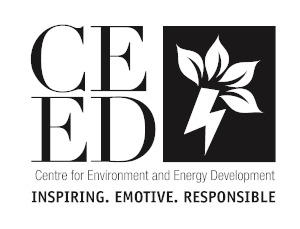Swati Anand |
In the face of unprecedented environmental challenges, urgent action becomes necessary. At this critical juncture, effective communication emerges as a beacon of hope, guiding us towards a greener and more sustainable future.
By employing compelling narratives and educational content, communication cultivates awareness, empowering individuals to make informed choices that collectively influence the trajectory of our planet’s well-being.
In this blog, we explore how communication plays a transformative role in promoting environmental consciousness and inspiring impactful initiatives:
Fostering Connection and Engagement: Communication bridges the gap between environmental experts, activists, and the wider public, encouraging engagement and active participation in environmental protection. Platforms like social media and online forums facilitate idea-sharing and collaboration among people committed to environmental causes.
Storytelling that Inspires Action: Narratives have the power to drive change. By leveraging storytelling, communication showcases real-life environmental champions and success stories, motivating others to take action and create a profound impact on the environment.
Cultivating Awareness and Knowledge: Communication serves as an educational tool, disseminating accurate information about environmental issues, scientific findings, and sustainable practices. Informed individuals are better equipped to drive change in their communities and beyond.
Amplifying Diverse Voices: Communication empowers marginalised communities disproportionately affected by environmental degradation. By amplifying their voices, communication fosters more inclusive and equitable solutions to environmental challenges.
Nurturing Global Collaboration: Communication transcends geographical boundaries, facilitating collaboration among individuals and organisations worldwide. Virtual conferences, webinars, and online collaborations strengthen global efforts to address environmental issues.
Encouraging Behavioural Change: Communication can positively influence human behaviour. Environmental campaigns can use persuasive messaging and behavioural science principles to encourage individuals to adopt eco-friendly habits and reduce their carbon footprint.
Leveraging Technology for Impact: Advancements in technology have made communication tools more sophisticated and accessible. Social media, mobile apps, and interactive websites offer innovative ways to engage with audiences, making environmental awareness more immersive.
Fostering Interdisciplinary Collaboration: Environmental issues require interdisciplinary solutions. Communication fosters collaboration between scientists, policymakers, artists, and activists from various fields, leading to innovative approaches to environmental conservation.
Conclusion
Amidst environmental challenges, communication emerges as a potent force for positive change. By weaving inspiring narratives, fostering education, and promoting collaboration, it can spark a collective movement advocating for a greener, healthier, and more sustainable world. Let’s unite in harnessing the potential of communication, embarking on a transformative journey towards a brighter environmental future.


